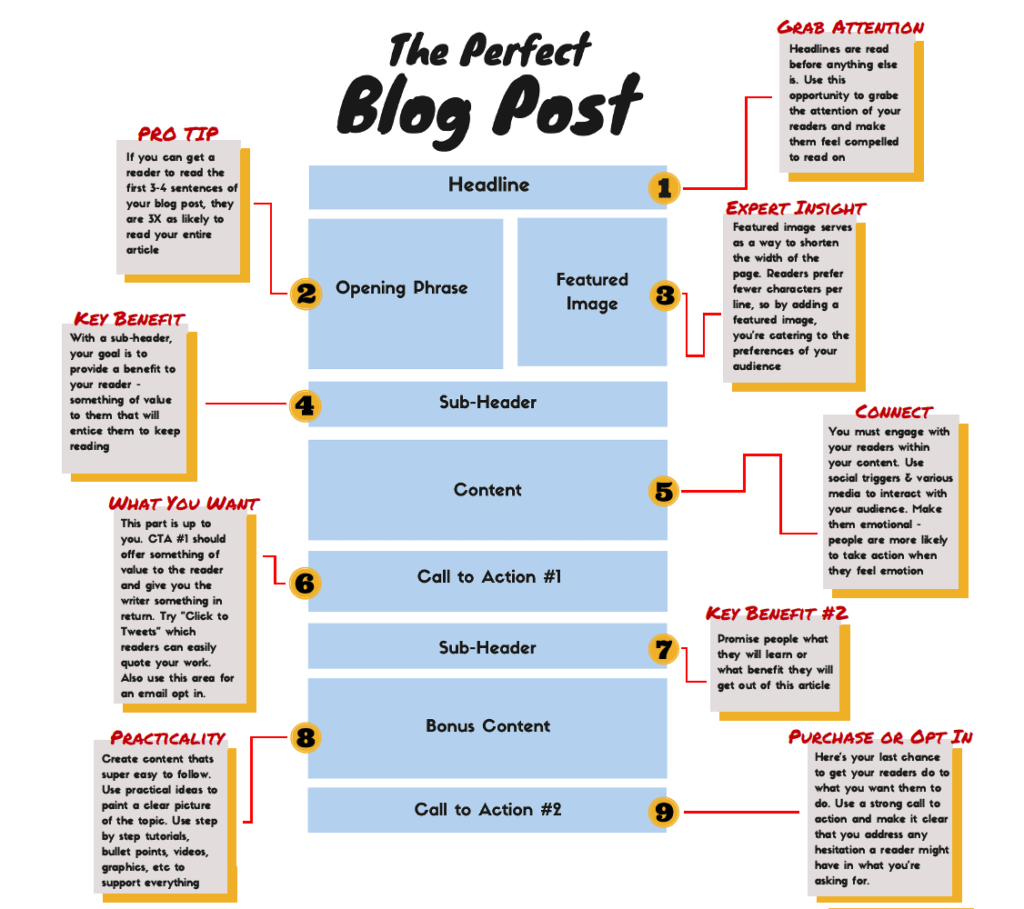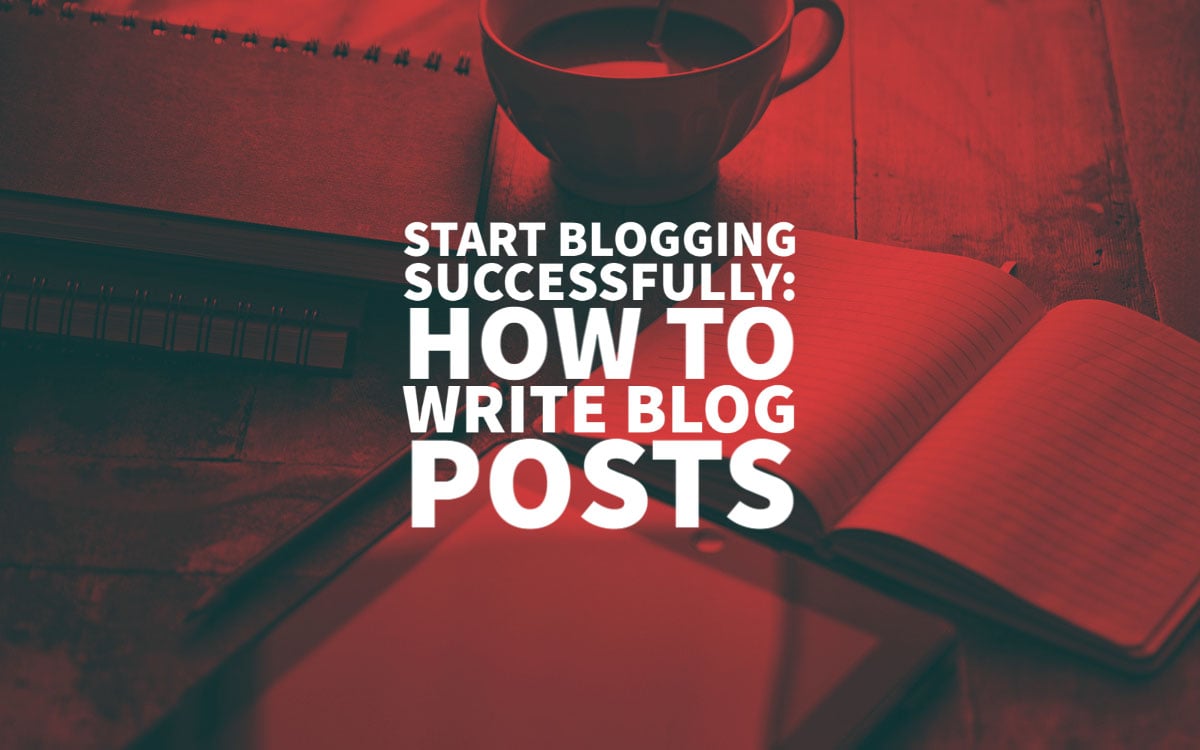
08 Feb Start Blogging Successfully: How to Write Blog Posts
Start Blogging Successfully: How to Write Blog Posts
Blogging is one of the essential parts of a marketing strategy. Whether you want to promote your company or your personal brand, a blog is a great way to make a name for yourself.
If done right, it can bring much traffic to your site, boost your sales, and become the go-to source for your subscribers.
But how to create a blog that will perform well? What should you do to increase its chances to rank higher in Google search results? How can you make people turn to your website instead of competition?
This article guides you through all-important questions: how to start a blog, how to create better content, how to make money blogging, and what to do in case you have no experience.
How to Start a Blog

1 – Find Your Topic
The first step is to find a niche, a topic that interests you enough to investigate and research it more fully.
Researching means finding out how other people talk about the subject, looking for blogs, forums and other content outside of your industry that speaks to your target audience members.
This will give you a better understanding of what questions your potential customers will ask about your industry and give you a better chance to answer these questions.
The easiest way is to use Google Trends to research and narrow down a niche topic. But don’t forget you should feel enthusiastic about the subject of your writing.
2 – Come Up with a Domain Name
Once you have found a niche topic, the next step is to choose the correct domain name and web hosting for your blog.
If you are not familiar with this, consider hiring a web developer who has experience building websites to handle all of your needs.
There are many different options for getting your blogging platform online, including using a free hosting service like Blogger, WordPress or Joomla.
Remember, your domain name and website design are crucial in SEO and attracting visitors. You need to make sure your domain name relates to your blog’s topic and is clear to people.
3 – Research the Competition
You should then find other sites and blogs in your niche that are related to your topic.
You will see how high (or low) the bar is raised and give you some ideas regarding your blog. Please do not copy other blogs in any way, whether it’s design, style, or tone.
Look at what they’re doing and find ways to create even better content.
4 – Create Amazing Content
After doing some competition research, it is time to make some great blog posts and place them on your site.
Some marketers choose to outsource this task to freelance writers; some prefer to hire an on-staff copywriter.
Of course, you can become a blogger yourself if your writing skills are exceptional.
These are the necessary steps you need to take to set up a blog. However, if you want it to be successful, you’ll need to dig deeper.
Blog Writing Tips
1 – Provide Valuable Content
Each of your blog posts should bring meaningful and valuable information. Make sure it’s relevant, accurate, and original.
If you’re covering a topic that has been around for a while, try to show a new side to it and your perspective, find recent cases and examples.
Poorly-written posts will bring less value, as people tend to close articles with an illogical structure and are filled with grammatical errors and typos.
Ensure you proofread your texts in a spell checker like Grammarly or use a professional editor’s services.
If you outsource your blog posts, make sure your authors are experienced enough to avoid linguistic mishaps.
2 – Enrich Your Blog Posts
When reading web texts, our attention span is way lower compared to books.
Mostly, we scan the text, trying to single out the information we need.
Long posts with gigantic paragraphs tire people out, so you need to separate your texts into shorter parts and include subheadings.
You can create high-value content by adding images, internal and external links.
If your images are relevant to your blog’s topic, you will increase the amount of time that readers spend viewing your page.
Images that your audience finds visually appealing will stick in their minds and remind them of something important.
3 – Create a Content Calendar
A well-thought plan helps you be organised when it comes to posting.
It also makes people want to return to your blog, as they know when the next publication is coming.
Don’t overcrowd your blog posts, or else people will lose interest, and it won’t matter how valuable or helpful your information and content are.
However, don’t limit yourself to posting once a month. This can also make your audience find a more consistent source of information.
4 – Think about SEO

Even if your blog is star-quality, it will make no difference if no one can find it.
Optimising your texts with keywords will let Google know that your content answers users’ queries.
And when users find your blog by inserting specific keywords, that means your content is relevant.
You can use free tools such as Google Trends or paid services like Ahrefs to research specific keywords to draw in your target audience.
Keyword research isn’t always an exact science, but it can be a great way to narrow down the list of potential topics and words that people use to discuss them.
It is instrumental in starting SEO and finding ideas for new blog posts, articles, or forum posts.
5 – Promote Your Blog
In addition to SEO, there are other ways to attract new visitors to your site.
It’s good to have accounts on popular social networks like Facebook, Instagram and Twitter.
You can promote your blog, tease your public with upcoming posts, and reuse your old posts if the topic is still relevant.
Another way to get exposure is to become a guest author on a more popular blog. Make sure it has a similar target audience as your site.
There is a great chance they will find your articles interesting and visit your blog to check you out.
6 – Monetise Your Blog
There are many different ways to monetise your blog. You can provide guest posting opportunities, sell ad spaces or advertise products in your posts. However, be very careful with the last one.
Promoting all third-party products in a row doesn’t make you look good.
Collaborate with companies you trust and whose services you use daily.
Whatever your preference is, you want to choose the strategy that allows you to make the most money with the least amount of work.
As long as you choose the appropriate monetisation method, it should be straightforward to make money with your blogging efforts.
7 – Engage Your Audience
When the audience loves your content, they tend to share and like your posts and leave comments.
All of that shows Google your blog follows its E-A-T guidelines.
That is Expertise, Authority, and Trust.
If people come back for more and quote you elsewhere, this means you’ve earned their trust, gained authority in your industry, and have a certain level of expertise.
You can encourage interaction between your readers and yourself.
Ask questions in your text, remind them to share links to your post if they liked it, and, most importantly, answer their questions in the comment section.
Now that you know the general tips about creating a blog, it’s time to narrow it down.
Here’s a step-by-step guide on writing your very first blog post.
How to Write a Good Blog Post
1 – Narrow Down the Topic
When you know your blog’s general theme, you need to think about individual posts’ topics.
Yet again, Google Trends will help you identify questions to raise in your posts and find interesting insights about your niche.
Quora, Hubspot and Buzzsumo are among other idea-generating tools. If the topic is too broad, consider splitting it into separate follow-up posts.
2 – Write an Outline for Your Post
An outline is a skeleton of your future article.
Think of how many parts it will have and what each paragraph will be about. Make notes as your ideas appear and then organise them.
Ideally, your outline should contain an introduction, several main sections and a conclusion.
You can change it later, but you should have at least a basic idea of what you’re about to say.
3 – Do Your Research
Don’t ever post unproven information.
Check your facts and research several sources before you write your text.
Make sure the statistics you use are accurate, and you credit the sources appropriately.
4 – Write the Text

Then comes the most time-consuming part.
Take your outline and start writing, adding “meat” to the “bones.”
It’s advisable to start the main body paragraphs first and then get back to the introduction.
This works better than you being stuck at the very beginning and losing precious time mulling over the first sentence.
When you have an almost-ready text, it’s easier to write the introductory paragraph.
The goal of the introduction is to get your readers interested enough to continue reading the entire post.
If it lacks appeal in this area, chances are your readers will not go any further.
5 – Make Use of Subheadings
A blog post that contains a series of subheadings, instead of a single introductory paragraph, may be received better.
You can also use descriptive subheading fonts that provide a simple means of expressing what you want your readers to know in just a few words.
6 – Optimise the Text with Keywords
The next step is making your blog post noticeable for search engines and potential readers.
Research each topic individually, create lists of keywords, and use them in your text.
Ideally, you will naturally use these words as you go if your article’s content corresponds to its actual topic.
But additional research may help you find some phrases you may have missed.
7 – Write the Headline
The headline is the first thing your audience sees. And it’s a “make it or break it” moment because this is when a person decides whether to read your post or not.
Make sure your headline is catchy, exact and informative. Avoid clickbait and vague titles that can mislead your readers.
8 – Find Appropriate Visuals

If you want your blog posts to be noticed and valued, you should post images that complement your overall content.
Instead of adding an image solely to show off or promote your brand, consider using images that would add value to your readers.
Images that show or illustrate the function or exciting aspects of your product or service can help your readers decide on your business.
Another useful thing is using videos that can illustrate your point. You can embed one from YouTube or upload it to your site.
However, some blogging platforms limit the size of uploaded videos. If you don’t want any software installed, you can try an online video compressor to make the clip fit the restrictions.
9 – Proofread the Text
When your text is ready, you may think it’s perfect. But don’t get fooled by a sense of accomplishment – there is more to do.
Re-read your text a couple of times to find mistakes, typos and incoherent sentences.
You can give it to someone else to read or even have it edited by a professional proofreading service.
10 – Double-Check the Layout
Now, you are ready to publish your article. Whether you work with a custom CMS or use a popular blogging platform, make sure the page looks just like you want:
- all images open correctly,
- the text is formatted to fit the template,
- the links are not broken.
Final Thoughts
After setting up your blogging site, you will find that it can be a fun and exciting place to share your thoughts and ideas with the world.
You may even find yourself making a few sales along the way as people find your content through the search engines.
Of course, it is essential to find a profitable strategy for making money with your website to not burn through your blog profits, trying to find another approach that works.
The best way to do this is to find a proven marketing system that can guide you to earn an income from home while enjoying your passion at the same time.
Once you have learned how to start a blog and set it up correctly, you will find no limit to how much you can achieve.




